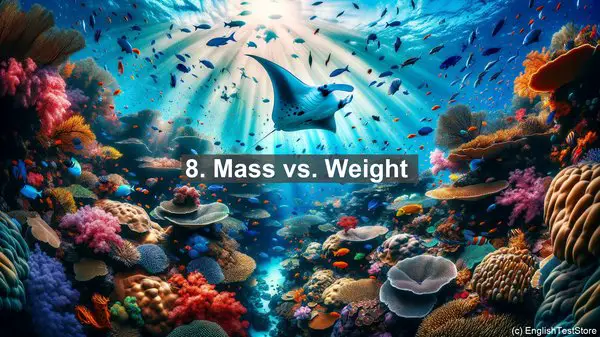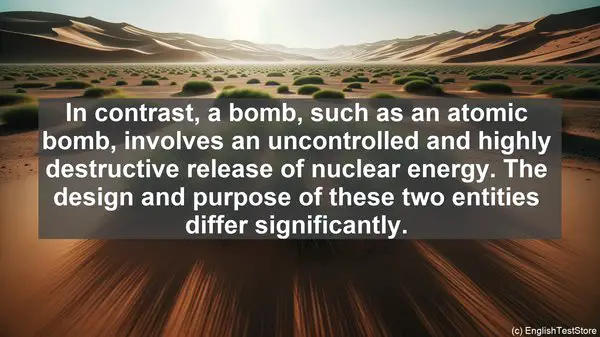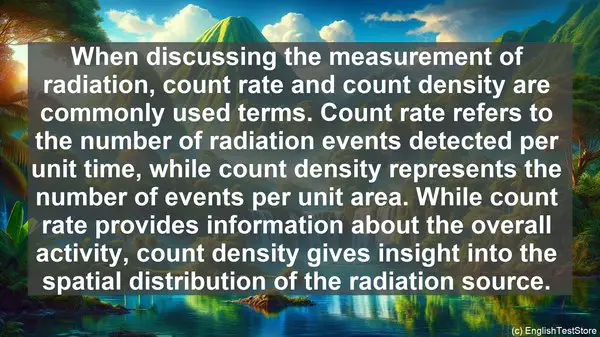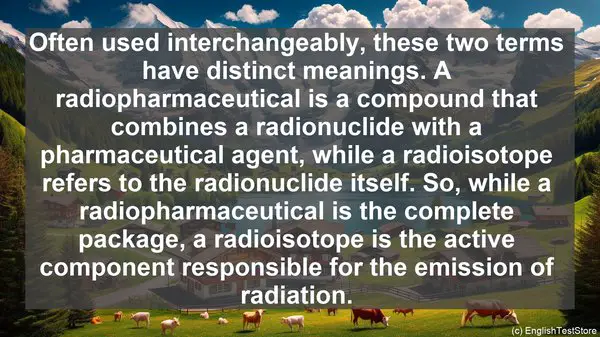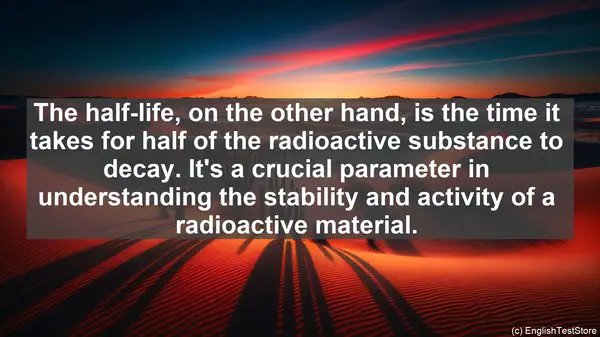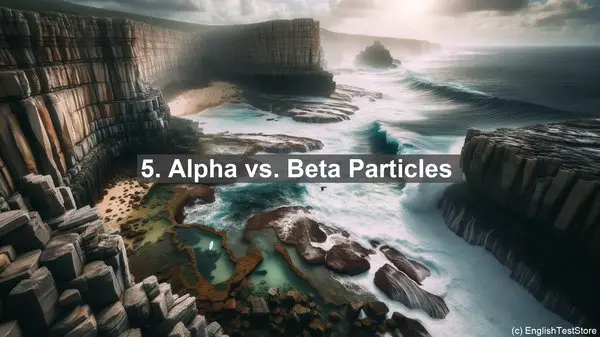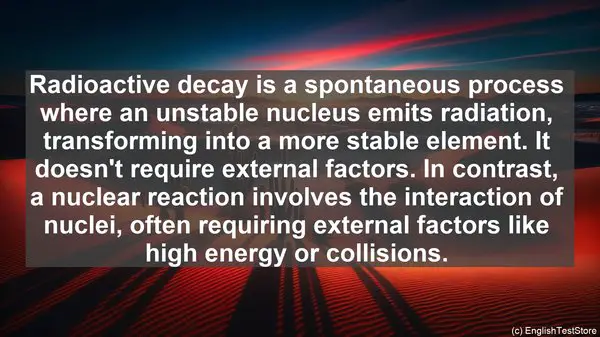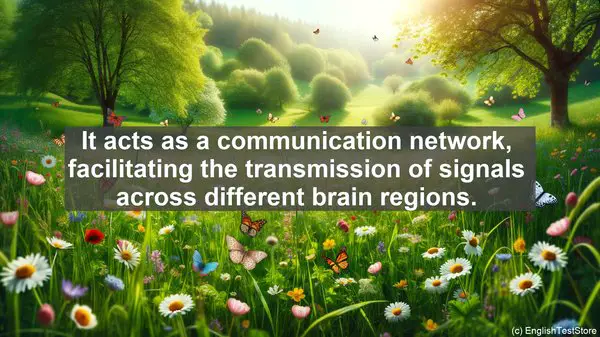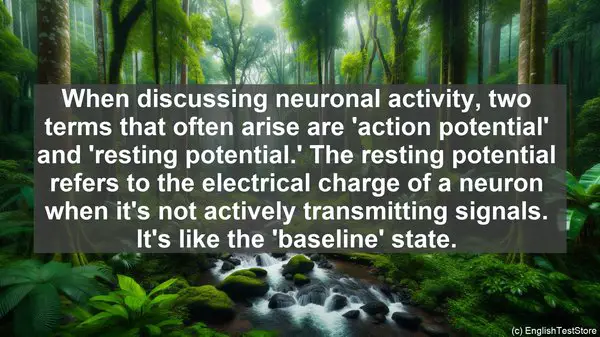Introduction
Welcome to today’s lesson on nuclear technology. In this lesson, we’ll be exploring the top 10 commonly confused words in this field. Understanding these words correctly is crucial for a successful career in nuclear technology. So, let’s dive in!
1. Fission vs. Fusion
One of the most fundamental distinctions in nuclear technology is between fission and fusion. Fission refers to the splitting of an atomic nucleus into two smaller nuclei, releasing a significant amount of energy. On the other hand, fusion involves the merging of two atomic nuclei to form a larger nucleus, also accompanied by the release of energy. While both processes release energy, they differ in their applications and the conditions required for their occurrence.
2. Radioactive vs. Radiated
The terms ‘radioactive’ and ‘radiated’ are often used interchangeably, but they have distinct meanings. ‘Radioactive’ refers to the property of an element or substance to emit radiation. On the other hand, ‘radiated’ describes the action of exposing something to radiation. So, while a substance can be radioactive, it needs to be ‘radiated’ to be exposed to radiation.
3. Isotope vs. Element
In nuclear technology, the terms ‘isotope’ and ‘element’ are sometimes confused. An element refers to a substance made up of atoms with the same number of protons. Isotopes, on the other hand, are variants of an element that have the same number of protons but differ in the number of neutrons. This difference in neutron count can lead to variations in the isotope’s stability and other properties.
4. Chain Reaction vs. Controlled Reaction
When discussing nuclear reactions, it’s essential to understand the difference between a chain reaction and a controlled reaction. A chain reaction is a self-sustaining process where the products of one reaction initiate further reactions. This can lead to a rapid release of energy, as seen in nuclear explosions. In contrast, a controlled reaction is carefully regulated, ensuring that the energy release occurs at a controlled rate, as in nuclear power plants.
5. Half-Life vs. Decay Rate
The terms ‘half-life’ and ‘decay rate’ are often used when discussing the stability of radioactive substances. The half-life refers to the time it takes for half of a sample of a radioactive substance to decay. It’s a measure of the substance’s stability. The decay rate, on the other hand, describes the speed at which the substance undergoes radioactive decay. While related, these terms represent different aspects of radioactive decay.

6. Enriched vs. Depleted
In the context of nuclear technology, ‘enriched’ and ‘depleted’ are used to describe the concentration of certain isotopes. ‘Enriched’ refers to an increased concentration of a specific isotope, often achieved through separation techniques. ‘Depleted,’ on the other hand, means a reduced concentration of the isotope. These terms are commonly used when discussing fuel for nuclear reactors.
7. Critical Mass vs. Subcritical Mass
The terms ‘critical mass’ and ‘subcritical mass’ are crucial in understanding nuclear reactions. A critical mass refers to the minimum amount of fissile material required to sustain a self-sustaining chain reaction. If the mass is below this threshold, it’s considered subcritical, meaning the chain reaction cannot be sustained. This concept is vital in nuclear reactor design and safety.
8. Contamination vs. Irradiation
When it comes to exposure to radiation, the terms ‘contamination’ and ‘irradiation’ are often used. ‘Contamination’ refers to the presence of radioactive substances on surfaces or objects. It can occur through direct contact or the release of radioactive particles. ‘Irradiation,’ on the other hand, describes the exposure to radiation without direct contact with a radioactive source. Both can have health implications and require appropriate safety measures.
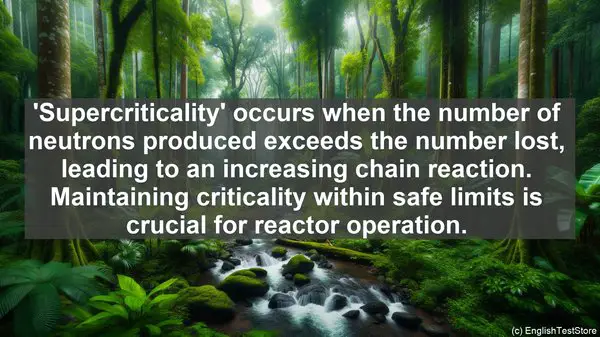
9. Shielding vs. Absorption
In the context of radiation protection, ‘shielding’ and ‘absorption’ play crucial roles. ‘Shielding’ refers to the use of materials to block or reduce the penetration of radiation. It acts as a physical barrier. ‘Absorption,’ on the other hand, describes the process by which a material takes in radiation energy, reducing its intensity. Both are essential strategies in minimizing radiation exposure.
10. Criticality vs. Supercriticality
The terms ‘criticality’ and ‘supercriticality’ are used to describe the state of a nuclear reactor. ‘Criticality’ refers to a state where the number of neutrons produced in each fission event is equal to the number of neutrons lost, resulting in a self-sustaining chain reaction. ‘Supercriticality’ occurs when the number of neutrons produced exceeds the number lost, leading to an increasing chain reaction. Maintaining criticality within safe limits is crucial for reactor operation.

